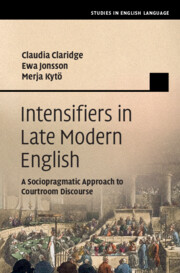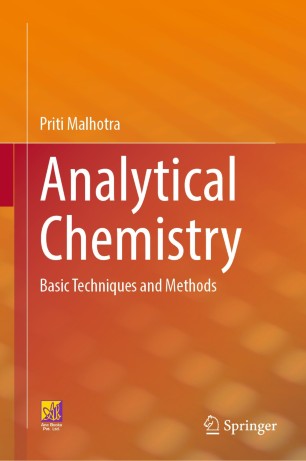
Book
A Practical Introduction to Electrical Circuits
ISBN : 9781032528168
Author : John E. Ayers
Publisher : CRC Press
Year : 2024
Language : English
Type : Book
Description : Ch. 1: Beginning Concepts and Resistive Circuits 1.1. Why Circuit Theory is Important 1.2. Assumptions of Circuit Theory 1.3. Charges, Voltages, and Currents 1.4. Power, Energy, and the Passive Sign Convention 1.5. Independent and Dependent Sources 1.6. The Resistor and Ohm’s Law 1.7. Kirchhoff’s Current Law 1.8. Kirchhoff’s Voltage Law 1.9. Kirchhoff’s Laws and Validity of Circuit Connections 1.10. Series Resistors and the Voltage-Divider Rule 1.11. Parallel Resistors and the Current-Divider Rule 1.12. Series-Parallel Combinations of Resistors 1.13. Other Configurations and Delta-Wye and Wye-Delta Transformations 1.14. Superposition 1.15. Summary 1.16. Problems Ch. 2: Nodal Analysis 2.1. Introduction and Definitions 2.2. The Basic Node Voltage Method (NVM) 2.3. The NVM and Alternate Node Numbering 2.4. The NVM with Four Essential Nodes 2.5. The NVM with Dependent Sources 2.6. The NVM with a Known Node Voltage 2.7. The NVM with a Supernode 2.8. Summary 2.9. Problems Ch. 3: Operational Amplifier Circuits 3.1. Introduction to Operational Amplifiers 3.2. Analysis of Operational Amplifier Circuits 3.3. Analysis of a Saturated Operational Amplifier Circuit 3.4. Analysis of a Circuit Involving Multiple Op Amps 3.5. Inverting Amplifier 3.6. Non-Inverting Amplifier 3.7. Summing Amplifier 3.8. Difference Amplifier 3.9. Design of Op Amp Circuits 3.10. Non-ideal Characteristics of Op Amps 3.11. Summary 3.12. ProblemsCh. 4: Mesh Analysis 4.1. Introduction and Basic Definitions 4.2. Applicability of the Mesh Current Method 4.3. The Basic Mesh Current Method (MCM) 4.4. The MCM with More Than Two Meshes 4.5. The MCM with a Known Mesh Current 4.6. The MCM with a Supermesh 4.7. The Double Supermesh 4.8. A Supermesh Containing a Known Mesh Current 4.9. The MCM with a Dependent Source 4.10. Choosing Between the MCM and the NVM 4.11. Summary 4.12. ProblemsCh. 5: Thevenin’s and Norton’s Theorems 5.1. Thevenin’s Theorem 5.2. Thevenin Equivalent for a Circuit with Only Independent Sources 5.3. Thevenin Equivalent for a Circuit with Mixed Sources 5.4. Thevenin Equivalent for a Circuit Containing only Dependent Sources 5.5. Source Transformations 5.6. Norton’s Theorem 5.7. Maximum Power Transfer 5.8. Summary 5.9. ProblemsCh. 6: First-Order Circuits 6.1. Introduction 6.2. The Capacitor 6.3. Parallel Capacitors 6.4. Series Capacitors 6.5. Natural Response of an RC Circuit 6.6. Step Response of an RC Circuit 6.7. General Case of Natural and Step Response in an RC Circuit 6.8. The Inductor 6.9. Series Inductors 6.10. Parallel Inductors 6.11. Natural Response of an RL Circuit 6.12. Step Response of an RL Circuit 6.13. General Case of natural and Step Response in an RL Circuit 6.14. Sequential Switching in First-Order Circuits 6.15. Summary 6.16. ProblemsCh. 7: Second-Order Circuits 7.1. Introduction 7.2. Natural Response of a Series RLC Circuit 7.3 Overdamped Natural Response of a Series RLC Circuit 7.4. Critically-Damped Natural Response of a Series RLC Circuit 7.5. Underdamped Natural Response of a Series RLC Circuit 7.6. Step and Natural Response of a Series RLC Circuit 7.7. Natural Response of a Parallel RLC Circuit 7.8. Step and Natural Response of a Parallel RLC Circuit 7.9. General RLC Circuit 7.10. Summary 7.11. ProblemsCh. 8: Sinusoidal Steady-State Analysis 8.1. Introduction 8.2. Review of Complex Numbers 8.3. Phasors 8.4. Impedances 8.4.1. Impedance of a Resistor 8.4.2. Impedance of an Inductor 8.4.3. Impedance of a Capacitor 8.4.4. Series Impedances 8.4.5. Parallel Impedances 8.4.6. Combinations of Series and Parallel Impedances 8.4.7. Impedance and Admittance 8.5. Sinusoidal Steady-State Analysis 8.6. Nodal Analysis in Circuits with Sinusoidal Excitation 8.7. Mesh Analysis in Circuits with Sinusoidal Excitation 8.8. Thevenin’s and Norton’s Theorems in AC Circuits 8.8.1. Thevenin’s Theorem 8.8.2. Source Transformations 8.8.3. Norton’s Theorem 8.9. Sinusoidal Steady-State Power 8.9.1. Instantaneous Power, Average Power, and Reactive Power 8.9.2. Average Power and Root Mean Square (RMS) Values of Voltage or Current 8.9.3. Complex Power S 8.10. Maximum Power Transfer in Circuits with Sinusoidal Excitation 8.11. Three-Phase Circuits and Systems 8.11.1. Three-Phase Configurations 8.11.2. Balanced Wye-Wye System 8.11.3. Balanced Delta-Delta System 8.11.4. Unbalanced Three-Phase System 8.12. Mutual Inductance and Transformers 8.12.1. Fundamental Considerations 8.12.2. The Dot Convention for Polarities 8.12.3. The Linear Transformer in the Phasor Domain 8.12.4. The Ideal Transformer 8.13. Summary 8.14. ProblemsCh. 9: Frequency Response 9.1. Introduction 9.2. Passive Filters 9.3. Active Filters 9.3.1. Sallen and Key Low-Pass Filter 9.3.2. Sallen and key High-Pass Filter 9.3.3. Multiple Feedback Bandpass Filter 9.4. Summary 9.5. ProblemsApp. A: Resistor Color Code App. B: Standard Values of 5% Resistors App. C: Standard Values of 10% Capacitors App. D: Ceramic Capacitors App. E: Electrolytic Capacitors App. F: Complex Numbers App. G: Cramer’s Method








